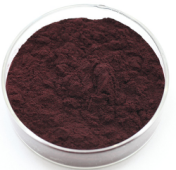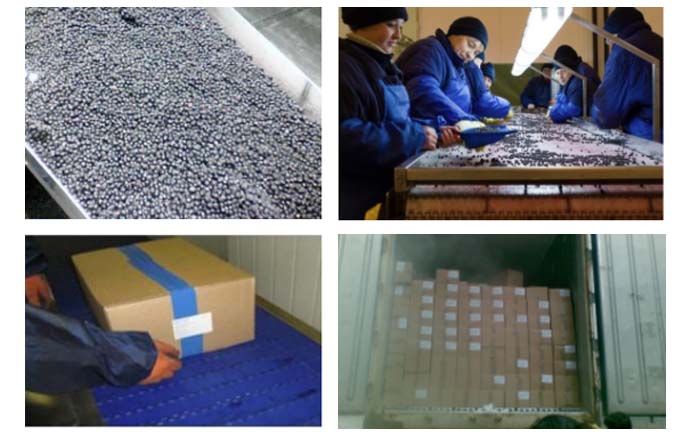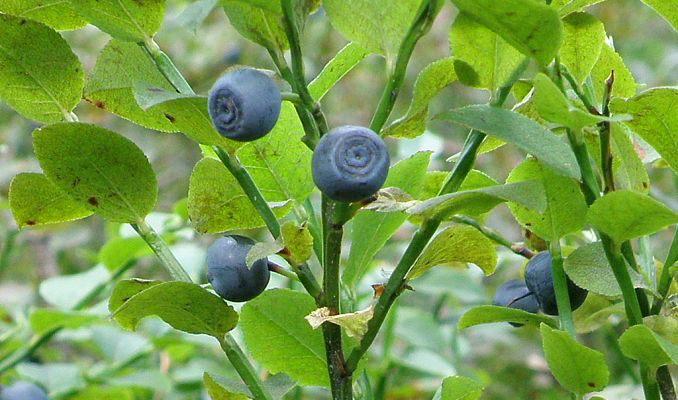Supply for Bilberry extract Factory for Istanbul
Supply for Bilberry extract Factory for Istanbul Detail:
[Latin Name] Vaccinium myrtillus l.
[Plant Source] Wild bilberry fruit cultivated from Sweden & Finland
[Specifications]
1) Anthocyanidins 25% UV (Glycosyl removed)
2) Anthocyanins 25% HPLC
3) Anthocyanins 36% HPLC
[Particle size] 80 Mesh
[Loss on drying] ≤5.0%
[Heavy Metal] ≤10PPM
[Pesticide residue] EC396-2005, USP 34, EP 8.0, FDA
[Storage] Store in cool & dry area, keep away from the direct light and heat.
[Package] Packed in paper-drums and two plastic-bags inside.
[General feature]
1. 100% extracted from European bilberry fruit, approved ID test from ChromaDex andAlkemist Lab;
2.Without any adultery of other relative species of Berries,such as Blueberry, Mulberry,Cranberry,etc;
3. Pesticide residue: EC396-2005, USP 34, EP 8.0, FDA
4. Directly import the frozen fruit from North Europe;
5. Perfect water solubility,water insolubles<1.0%
6. Chromatographic fingerprint match EP6 requirement
[What is bilberry fruit]
Bilberry (Vaccinium Myrtillus L.) is a kind of perennial deciduous or evergreen fruit shrubs, mainly found in subarctic regions of the world as in Sweden, Finland and Ukraine, etc. Bilberries contain dense levels of anthocyanin pigments, which was said popularly to have been used by World War II RAF pilots to sharpen night vision. In fork medicine, Europeans have been taking bilberry for a hundred years. Bilberry extracts entered the healthcare market as a kind of dietary supplement for effects on vision enhancement and visual fatigue relief.
[Function]
Protect and regenerate rhodopsin and cure the eye diseases;
Prevent the cardiovascular diseases
Antioxidant and anti-aging
Softening blood capillary, enhancing the heart function and resisting cancer
Product detail pictures:

Related Product Guide:
Our pursuit and enterprise aim would be to "Always fulfill our buyer requirements". We carry on to acquire and layout excellent quality items for the two our old and new clients and realize a win-win prospect for our shoppers in addition as us for Supply for Bilberry extract Factory for Istanbul , The product will supply to all over the world, such as: Uzbekistan, Brasilia, New Orleans, We set a strict quality control system. We have return and exchange policy, and you can exchange within 7 days after receive the wigs if it is in new station and we service repairing free for our products. Please feel free to contact us for further information and we will offer you competitive price list then.
Top 10 Worst Shark Tank Pitches
Subscribe: https://goo.gl/Q2kKrD
TIMESTAMPS BELOW ———————– CHECK OUT WATCHMOJO’S NEW BOOK, LINKS BELOW!
Any aspiring entrepreneurs out there? Here are a few pointers on what not to do. Welcome to WatchMojo.com, and today we’re counting down our picks for the top 10worst “Shark Tank” pitches. For this list, we’re looking at the absolute worst products or services pitched on the U.S. version of “Shark Tank,” but we’re also taking into consideration the quality of the pitches themselves.
The 10-Year Overnight Success: An Entrepreneur’s Manifesto: How WatchMojo Built The Most Successful Media Brand On YouTube
PAPERBACK: https://goo.gl/93prjz
KINDLE: https://goo.gl/Hs1hKq
If you’ve never used the Kindle App before, now’s your chance to CHECK it out for FREE! CLICK: https://goo.gl/WmULsn
01:01 #10. Sticky Note Holder
02:13 #9. No Fly Cone
03:15 #8. Squirrel Boss
04:31 #7. Throx
05:24 #6. Track Days
06:33 #5. The Sullivan Generator
07:51 #4. Cougar Limited
09:01 #3, #2 and #1 ????
WatchMojo’s Social Media Pages
https://www.Facebook.com/WatchMojo
https://www.Twitter.com/WatchMojo
https://instagram.com/watchmojo
Get WatchMojo merchandise at https://watchmojo.com/store/
WatchMojo’s ten thousand videos on Top 10 lists, Origins, Biographies, Tips, How To’s, Reviews, Commentary and more on Pop Culture, Celebrity, Movies, Music, TV, Film, Video Games, Politics, News, Comics, Superheroes. Your trusted authority on ranking Pop Culture.
Stop bugging me its here: https://www.drillpillfreetrial.com/
In our cooperated wholesalers, this company has the best quality and reasonable price, they are our first choice.









